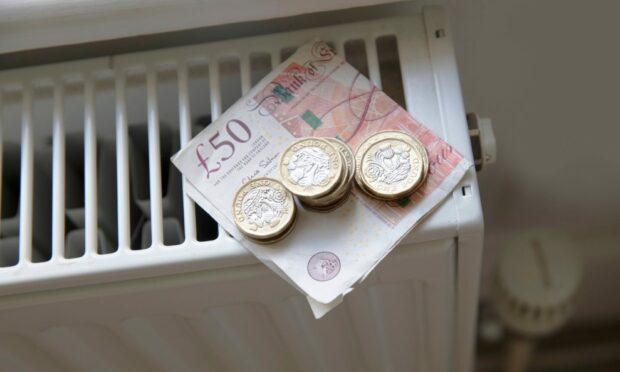As energy bills rise, many of us have been careful to switch off power sockets and lights around the house in an attempt to save money.
But how much is this making an impact and what are the main offenders?
The Press and Journal has put together a list reporting how much the average household electrical items are costing.
Prices may differ depending on the rate of each household’s electricity and the item but here are a few calculated using the national average of 34p per kilowatt hour (kWh) as reported by Ofgem.
Everyday essentials
Lightbulbs
With the dark winter mornings and evenings comes the increase of lighting at home. In order to save costs on electricity bills, many people have switched to energy-saving bulbs as these use less electricity to run.
However, even these more cost-effective bulbs can add up.
When used an average of six hours a day, one energy-saving CFL bulb costs around 4p to run whereas an energy-saving LED bulb costs 1p.
Of course, very rarely is just one single light switched on at home. Times this by four lights, this adds up to £1.12 a week for CFL bulbs, £4.48 a month and £53.76 a year.
For the energy-saving led bulbs, this drops to 28p a week and only £13.44 a year.
Kettle
Being a nation of tea and coffee drinkers and hot water bottle users, it is a rare household that is not boiling a kettle daily.
Every full kettle boiled, costs an average of 7p. This is usually halved if the kettle is only half filled as it uses less electricity to boil.
If a full kettle is boiled twice a day, this costs around 98p a week, £3.93 a month and £47.04 a year.

Toaster
Toast in the morning makes for a cheap and cheerful breakfast and despite the increase in electricity charges, the average running cost has not changed that.
Using a toaster for three minutes a day sets you back 2p a pop which adds up to around £7.14 a year.
Electric shower
For all those shower singers and deep thinkers who use their daily wash as an imaginary stage or daydreaming spot, you might want to think again.
A 10-minute shower will set you back around 51p a day. Weekly, this adds up to £3.57 and around £186.15 a year.
Did you know, showers and baths use the most amount of water in the home (30%)?🤔
Knocking 2 minutes off your shower can save over 5,000 litres & around £130 off your energy bill, each year!💷😲💧
More tips: https://t.co/azXQroX03e#WaterIsAlwaysWorthSaving https://t.co/GGmvvEJX9M
— Scottish Water (@scottish_water) November 10, 2022
A five-minute shower halves the daily price to 26p a day and a yearly cost of £93.08 while a three minute wash cuts this to 15p and £55.85 respectively.
Scottish Water has said cutting your shower down by two minutes could save up to £130 on your utility bills and also cuts down on water usage.
Cooking
For a quicker method of cooking, the average microwave costs around 5p for every 10 minutes it is used. If used for this amount of time every day for a year, this adds up to £16.55.
The cost of running other electrical appliances for three hours a week:
Slow cooker: £0.14 a week/ £0.57 a month/ £7.43 yearly
Electric hob or grill: £1.53 a week/ £6.12 a month/ £79.56 yearly
Air fryer: £1.94 per week/ £7.75 a month/ £100.78 yearly
Electric oven: £2.14 per week/ £8.57 a month/ £111.38 yearly
Keeping the house clean
Those handy appliances helping to keep the home clean and tidy also have their price.
dishwasher
An average one-and-a-half-hour cycle on a dishwasher costs about 69p which, if used daily, adds up to a yearly bill of £251.30.
washing machine
The hourly rate of using a washing machine costs even more averaging at around 71p an hour while a tumble dryer costs 85p.
hoover
Ten minutes of using a hoover sets you back around 5p a session and ironing for half an hour will cost around 24p.
Working from home
Since the pandemic, a lot of people have preferred to work from home and have saved time and money through by-passing the commute to work.
However, the required increased use of heating and lighting in the house has added to the utility bills.
Computer
For those using a PC or desktop computer for the average working week, for seven hours a day this costs 48p. This adds up to around £2.40 a week, £9.60 a month and £105.60 a year.
Fan Heater
People using a fan heater to stay warm at the desk can also add on another 85p per hour of use.
‘Reach out for help’
Staff at Aberdeen’s Citizens Advice Bureau (Cab) say the percentage of people seeking advice on utility bills doubled between September and October.
Reham Saleh, outreach advisor at Aberdeen Cab, said: “People have been struggling. There’s definitely a lot of people approaching us.
“There have been clients who have been saying to us that they can’t afford to heat up their homes which is why they’ve been switching off their boilers and trying to wear jackets at home. They said they’ve been struggling to keep their kids warm.”
Staff advise people on using boilers efficiently and to ask utility companies if there is a cheaper tariff they can move to or direct them to possible grants.
Things such as improving the insulation at home, changing to energy-efficient bulbs and not completely filling up the kettle all saves money.
Mrs Saleh added: “It’s just really using what you need instead of over usage.
“Even leaving TVs and appliances on a standby, people don’t realise this uses electricity in the background.”
Kate Dean, deputy manager at Aberdeen Cab, encouraged anyone struggling to contact them and also use resources open to them.
“Contact us, contact your suppliers and reach out for help don’t just stay at home and shiver,” she said.
“There are also a lot of churches and community centres who are running warm hubs. These are places that you can go to that will be heated through the day and in some cases through the evening so make use of that.
“Rather than sitting at home it might be better to get out and about use public buildings that are available.”
For more information on available support, visit Cab’s website.




Conversation